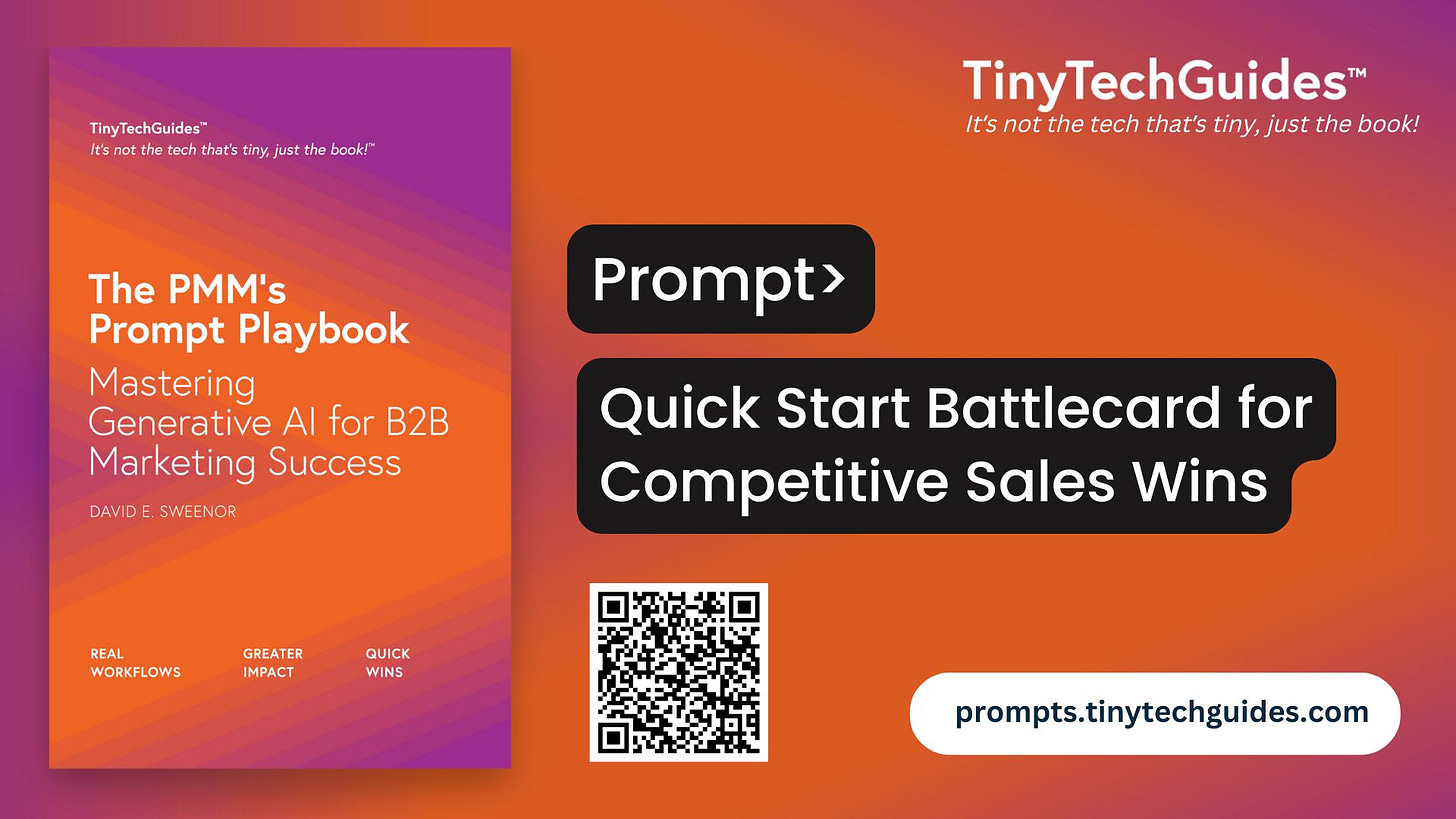QuickStart Battlecard for Competitive Sales Wins
A tactical, prompt-driven method to help your sales team compare competitors, highlight differentiators, and close more deals—faster.
QuickStart Battlecard Workflow for Sales Enablement
This prompt is not part of The PMM’s Prompt Playbook which has 30 ready-to-use prompts. If you're looking for more cut-and-paste prompts, join the Substack! Paid subscribers receive new cut-and-paste prompts every week.
Get the PMM’s Prompt Playbook and Modern B2B Marketing today!
What this workflow does:
The QuickStart Battlecard Workflow helps sales and enablement teams quickly build a competitive battlecard that’s ready for action. It uses a structured, prompt-based format to guide the creation of messaging that highlights differentiators, handles objections, and positions your product effectively against named competitors. Without getting bogged down in research, this workflow gets your team aligned with concise talking points, proof-backed claims, and tactical insights—fast.
Workflow Steps Summary
Step 0: Define inputs
Step 1: Define objective and audience
Step 2: Build competitor comparison
Step 3: Craft key sales talking points
Step 4: Prepare objection handling responses
Step 5: Add proof points
Step 6: Summarize the battlecard
Step 0: Define Inputs
{product_name = Name of your product/solution},
{industry = Target industry},
{audience = Buyer personas},
{key_value_proposition = Concise product value statement},
{competitor_name(s) = List of competitors},
{competitor_strengths = Strengths of competitor(s)},
{competitor_weaknesses = Weaknesses of competitor(s)},
{differentiators = Unique strengths of your product},
{objections_and_responses = Common objections + rebuttals},
{proof_points = Real-world case studies, ROI data, or customer quotes}
Step 1: Define Objective and Audience
#Role
You are a sales enablement strategist creating a competitive battlecard for {product_name} in {industry}.
#Context
The battlecard will help sales reps position {product_name} effectively against {competitor_name(s)}. It must be concise, actionable, and tailored to {audience}.
#Task
Define:
- Target audience: Who will use the battlecard and which buyer personas they’re targeting.
- Objective: Why this battlecard is being created and what it should enable sales to do.
#Format
Provide:
Target audience:
○ Sales team: [Who’s using it]
○ Buyer personas: [Who they’re selling to]
Objective:
○ [E.g., “Equip sales reps to position {product_name} against {competitor_name}, highlight key differentiators, and address objections.”]
#Tone
Clear, strategic, and actionable.
Step 2: Build Competitor Comparison
plaintext
CopyEdit
#Role
You are a competitive intelligence analyst comparing {product_name} with {competitor_name(s)}.
#Context
This section outlines strengths, weaknesses, and differentiators to arm the sales team with smart comparison points.
#Task
Fill out a comparison table with:
- Competitor strengths and weaknesses
- {product_name}'s strengths and key differentiators
#Format
Table format with rows for Strengths, Weaknesses, Differentiators
#Tone
Clear, concise, and competitor-focused.
Step 3: Craft Key Sales Talking Points
Keep reading with a 7-day free trial
Subscribe to B2B Marketing Prompts by TinyTechGuides to keep reading this post and get 7 days of free access to the full post archives.


